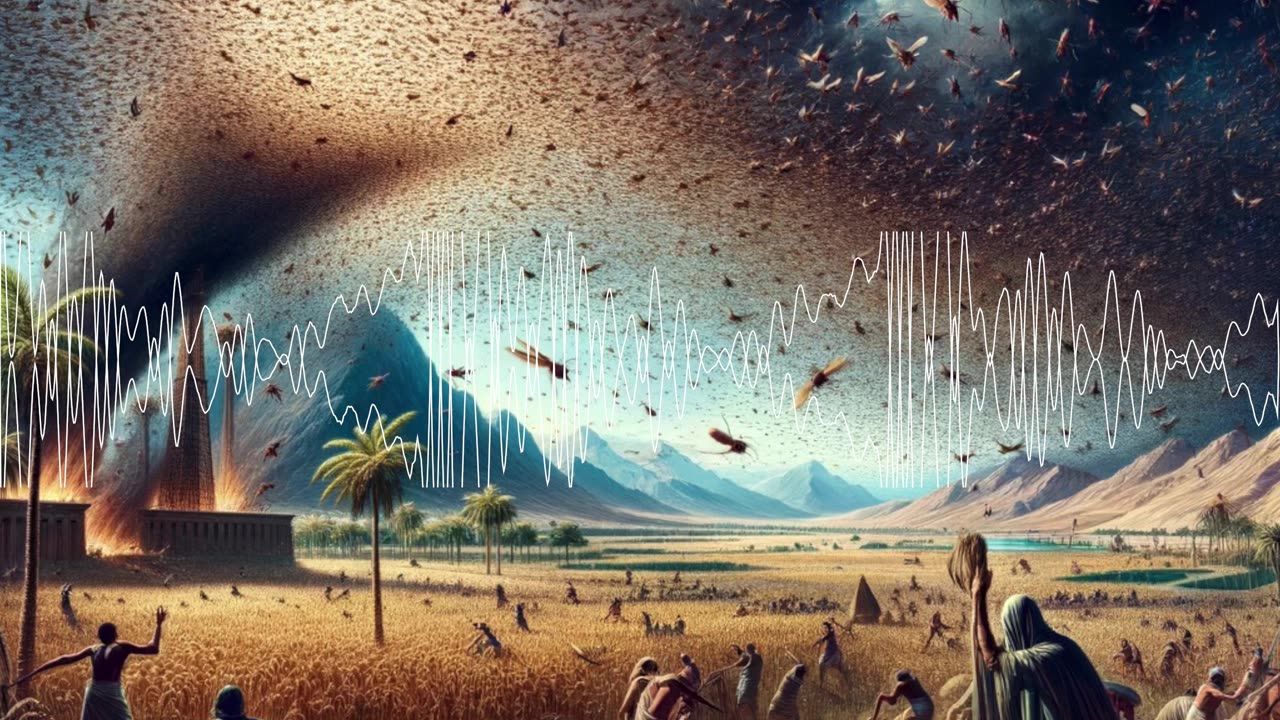Premium Only Content

Exodus Chapter 8: This chapter describes the second, third, and fourth plagues brought upon Egypt
The plagues of frogs, flies, and gnats, as sent by Yahuah upon Egypt, carry deep symbolic significance within the narrative of Exodus, each representing a divine challenge to the Egyptian pantheon and a demonstration of Yahuah's power over nature and the gods of Egypt. The plague of frogs (from the Nile) mocked the Egyptian god Heket, associated with fertility and depicted with a frog head, undermining the Egyptians' reverence for her powers. The swarms of flies disrupted daily life and emphasized Yahuah’s ability to penetrate the protected spaces of Egyptian homes, challenging the deity Khepri, who was represented as a scarab beetle and associated with the movement of the sun. The gnats, born from the dust of the earth, defied the god Geb, the deity of the earth, showcasing Yahuah's sovereignty over the very ground Egyptians walked on. Each plague was a lesson in humility, teaching Pharaoh and the Egyptians that Yahuah, not their deities, held dominion over creation, leading up to the ultimate deliverance of His people. These plagues, beyond their immediate discomfort and chaos, served a greater purpose in the divine plan, demonstrating Yahuah’s unmatched power and His will to liberate His people.
-
 2:31:49
2:31:49
MattMorseTV
20 hours ago $0.57 earned🔴Trump's Oval Office BOMBSHELL.🔴
28.4K46 -
 25:14
25:14
GritsGG
16 hours agoRank 1 Player Spectates Casual Solos!
13.6K -
 LIVE
LIVE
Lofi Girl
2 years agoSynthwave Radio 🌌 - beats to chill/game to
614 watching -
 4:33:40
4:33:40
FreshandFit
10 hours agoAfter Hours w/ Girls
243K127 -
 2:33:36
2:33:36
Badlands Media
11 hours agoOnlyLands Ep. 21: From Trump’s VP Pick to Green Energy Grift
72.9K11 -
 1:07:26
1:07:26
Inverted World Live
14 hours agoThe War Against Robots w/ Joe Allen
104K5 -
 6:08:31
6:08:31
SpartakusLIVE
13 hours agoWARZONE NUKE IS BACK?! || Solo Challenge CHAMPION to start, duos w/ the Dawg later
107K1 -
 1:00:18
1:00:18
Man in America
15 hours agoBig Pharma’s Empire of Lies Is COLLAPSING as People Turn to Natural Medicine
68.3K27 -
 7:17:44
7:17:44
Drew Hernandez
17 hours agoGHISLAINE MAXWELL SAYS CLAIMS EPSTEIN WAS INTELLIGENCE ASSET ARE BULLSH*T?!
39.8K41 -
 29:54
29:54
Afshin Rattansi's Going Underground
1 day agoUkraine: Prof. Anatol Lieven SLAMS Europe’s ‘BLOODY STUPIDITY’ as Trump Negotiates with Putin
36K8